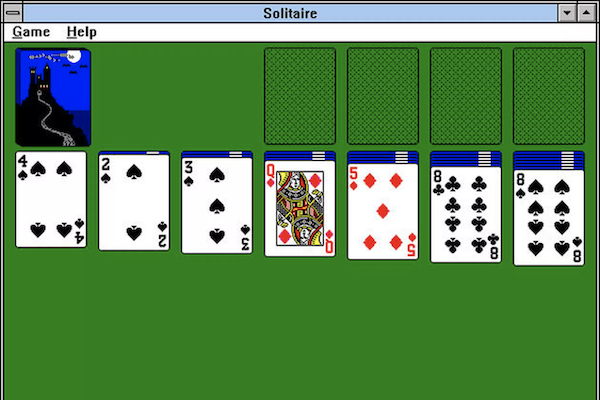Solitaire History
Origin of Playing Cards
Before we step into the history of solitaire, let's briefly consider the origin of playing cards. Evidence of playing cards can be traced back to as early as the 10th century in Asia, specifically in China. Games spread to European areas through India and the Persian Empire. The very first references of playing cards in Europe can be found in the 14th century, while card-designing, making and painting are recorded in the 15th century.
During this period, only the extremely wealthy could afford the luxury of card games as the cost of producing playing cards was extortionate. With advancements in printing technology and woodwork, cards became more available towards the end of the 15th century and an increasing amount of people could enjoy card games.
Origin of Solitaire
While the exact origin of solitaire is unclear, solitaire games date back to the 18th century, with the first reference occurring in a German text (Das Neue Königliche L'Hombre-Spiel, 1783). The title of this literature translates to "The New Royal L'Hombre" and described the rules for various games.
However, both solitaire and patience (another name for solitaire for its nature as a game of patience) are both words borrowed from French. Many of the terms used in related games (such as tableau) as well as the names of solitaire variations are also of French origin. Furthermore, a large proportion of the early literature on solitaire was also from France, giving support that the game originated from the country.
On the other hand, because many books about patience games were published in Sweden in the first half of the 19th century, some also believe that Sweden is the ultimate origin of the game. It is therefore apparent the origin of solitaire is still heavily debated today.
Rise in Popularity
It is speculated that the game became popular in the Baltic regions alongside the rise of divination by cards and tarot card reading. The concept was that if the game was won, the player’s desire would become true.
Another explanation for the rise in popularity of the game is the advancement of society. As industrial revolutions and urbanizations arose across various parts of the world, the amount of free time people had increased; for example, rural communities could spend less time on farms due to machinery and industrialization. Those who were rich saw their wealth increase further, as did their leisure time. With more time available, people sought out entertainment, playing more games, especially card games.
Well-known figures associated with Solitaire
As the popularity of solitaire grew, formulation of its adaptations rose also, with many skilled players developing new ways to keep the game fun and entertaining. Take Klondike, a well-loved solitaire game, as an example. Klondike was originally known as Canfield, named after its inventor Richard Albert Canfield. Canfield was one of the most famous and wealthiest gamblers during his time. At the same time, the solitaire variant Canfield Solitaire is now named after Canfield.
Another well-known figure within solitaire is Napoleon, with many games being named after him (including Napoleon at St Helena, Emperor, Napoleon's Heart, ...). A handful of articles proposed that Napoleon came up with the game Double Napoleon while exiled on the island of St. Helena in 1816 in order to fill his time, though to date there is no proven evidence for this. Moreover, Ross and Healey have shown that he did not play solitaire while he was exiled.
Multiplayer vs. Single-player
Early mentions of solitaire seem to indicate it was first practiced as a competitive card game between two players. Commonly, players took turns playing actively while the other and bystanders watch on and place bets on the result of the game. It is believed that over time players were more prone to play individually and practice on their own, thus removing the social element from the game. Single-player games, therefore, took over and became more popular.
The first book about Solitaire
In English society, solitaire gained popularity thanks to a book called Illustrated Games of Patience, written by Lady Adelaide Cadogan. The exact date when the first version was written is unknown, but the second version appeared in 1874 and this version is still sold today!
Modern Solitaire

In modern history, the introduction of personal computers drove new acclaim for card solitaires. The addition of traditional games, including solitaire, onto the Windows operating system in the 20th century gave them broader popularity. Although originally played with a physical deck of cards, digital implementation of the playing cards made it more convenient, quick and easy to play.
In traditional solitaire, dealing, moving and revealing cards were at times tedious and fiddly, taking away the fun aspect of the game. With computers these issues were solved, allowing the player to focus on the gameplay and strategy involved, and soon solitaire became a household favourite.